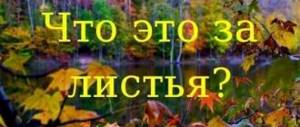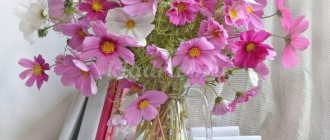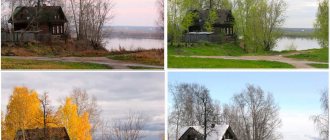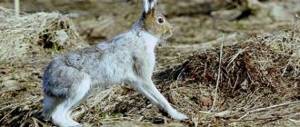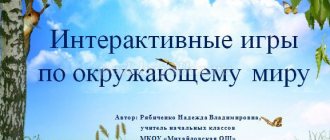1) What groups of animals do you know? How are they different?
I know the following groups of animals:
Mammals or animals. They feed their young with milk.
Birds. They can fly and hatch eggs, covered with feathers.
Fish . They swim in water and breathe oxygen dissolved in it. They are covered with scales and spawn.
Insects . They have six limbs, and their body is divided into segments.
Amphibians live both in water and on land.
3) Use the textbook to get acquainted with animals of different groups. Give a message to the class.
Report on insects for grade 2
The world of insects is amazing and diverse. At first glance, various insects are completely different from each other. What can a butterfly and a grasshopper have in common? But it turns out that all insects have exactly three pairs of limbs, six legs, and this is their main distinguishing feature.
At the same time, the insects themselves are striking in their appearance and difference from other groups of animals. They can have many eyes, their ears can be located on their paws, they can build houses and live in them with huge families. Insects can also go through different stages in their development. Be a caterpillar, a pupa, a butterfly.
Presentation on the surrounding world on the topic “Classification of animals” (grade 2)
The science of classifying animals is called systematics or taxonomy. This science determines family relationships between organisms. The degree of relationship is not always determined by external similarity. For example, marsupial mice are very similar to ordinary mice, and tupai are very similar to squirrels. However, these animals belong to different orders. But armadillos, anteaters and sloths, completely different from each other, are united into one squad. The fact is that family ties between animals are determined by their origin. By studying the skeletal structure and dental system of animals, scientists determine which animals are closest to each other, and paleontological finds of ancient extinct species of animals help to more accurately establish family ties between their descendants. Genetics , plays a major role in the taxonomy of animals .
The first mammals appeared on Earth about 200 million years ago, separating from animal-like reptiles. The historical path of development of the animal world is called evolution
. During evolution, natural selection occurred - only those animals survived that were able to adapt to environmental conditions. Mammals have evolved in different directions, forming many species. It happened that animals that had a common ancestor at some stage began to live in different conditions and acquired different skills in the struggle for survival. Their appearance was transformed, and changes useful for the survival of the species were consolidated from generation to generation. Animals whose ancestors looked the same relatively recently began to differ greatly from each other over time. Conversely, species that had different ancestors and went through different evolutionary paths sometimes find themselves in the same conditions and, changing, become similar. Thus, species unrelated to each other acquire common features, and only science can trace their history.
The living nature of the Earth is divided into five kingdoms : bacteria, protozoa, fungi, plants and animals. Kingdoms, in turn, are divided into types. There are 10 types of animals: sponges, bryozoans, flatworms, roundworms, annelids, coelenterates, arthropods, mollusks, echinoderms and chordates. Chordates are the most progressive type of animals. They are united by the presence of a notochord, the primary skeletal axis. The most highly developed chordates are grouped into the vertebrate subphylum. Their notochord is transformed into a spine.
Kingdoms
Types are divided into classes. In total, there are 5 classes of vertebrates : fish, amphibians, birds, reptiles (reptiles) and mammals (animals). Mammals
- the most highly organized animals of all vertebrates.
What all mammals have in common is that they feed their young with milk
.
The class of mammals is divided into subclasses : oviparous and viviparous. Oviparous mammals
They reproduce by laying eggs, like reptiles or birds, but the young are fed milk.
Viviparous mammals
are divided into infraclasses: marsupials and placentals.
Marsupials give birth to underdeveloped young, which are carried to term in the mother's brood pouch for a long time. In placentals, the embryo develops in the mother's womb and is born already formed. Placental mammals have a special organ - the placenta, which carries out the exchange of substances between the maternal body and the embryo
during intrauterine development. Marsupials and oviparous animals do not have a placenta.
Message about birds for 2nd grade
Birds are amazing animals that can fly. Birds fly thanks to their wings and the fact that they are covered with feathers. But the feather not only helps the bird rise into the sky and fly. This is generally a very important adaptation for birds.
A feather can protect a bird from cold and water, keep it warm and prevent it from getting wet, and protect it from scratches and damage.
And therefore, birds are not only not afraid to fly, but many of them are excellent swimmers.
Interestingly, there are flightless birds in nature, but they still have feathers. After all, it is feathers that distinguish birds from other animals.
Message about fish for 2nd grade
Fish are amazing creatures that live in water. And over many centuries of evolution, fish have perfectly adapted to life in water. They acquired a streamlined body and fins that help the fish swim in the right direction. They acquired a tail, which serves as a kind of rudder. They learned to breathe oxygen dissolved in water. But the main adaptation of fish for life in water is their scales.
It is interesting that you can determine its age by the scales of a fish, because the scales grow year after year, and every year a new ring appears on the scales, wider in summer, narrower in winter.
Message about animals for grade 2
Animals are otherwise called mammals because they are the only group of animals that feed their young with mother's milk. Many people think that animals live only on land, but this is not so. After all, whales and dolphins are also animals and belong to mammals.
The animals are very diverse, some are covered with thick fur, others are naked, some see well, others are completely blind, some run quickly, but others know how to hide perfectly. And animals eat differently. Some eat various plants, some other animals, and there are animals that eat everything.
Animals can be found on all continents of the Earth, because animals adapt well to environmental conditions.
4) What new things did you learn about each group of animals from these stories?
I learned that insects can have many eyes, and that their hearing organs may not be located on their heads. That birds fly thanks to feathers, which also serve as a protective covering for them. That the age of a fish can be determined by its scales. That mammals can live on both land and sea.
Lesson summary. The world around us, 2nd grade. What types of animals are there?
Subject: the surrounding world, 2nd grade, educational complex “School of Russia” Author: Lyubov Georgievna Selyakova, primary school teacher at the Municipal Budgetary Educational Institution “Argunovskaya Secondary School” Lesson topic: What kinds of animals are there? Lesson type: discovery of new knowledge Purpose : to form children's understanding of groups of animals and their distinctive features. Objectives: 1. Consider the dependence of the structure of animals on their lifestyle; 2. Introduce interesting facts from the life of animals. 3. Teach children to work cohesively in a group or pair. Planned achievements of students Equipment for the lesson : presentation “What kinds of animals are there”, computer, multimedia projector, screen, textbook for grade 2 “The world around us” by A.A.
Pleshakov, workbook, cards for group and pair work, envelopes with pictures of animals, an exhibition of books about animals, colored squares. Lesson progress 1. Organizational moment. -Let's smile at each other. It's good when the day starts with a smile. Try to maintain this good mood throughout the lesson. 2. Checking homework. -Today we will continue our journey, but where? You will find out by solving the riddle: The house is open on all sides, It is covered with a carved roof. Come into the green house, you will see miracles in it. - What is this riddle about? (forest) -Why is the forest called the “lungs” of the planet? (The forest is a factory for the release of oxygen; it is necessary for the life of all living things) - How should the forest be protected? (Do not light fires, plant new trees, do not cut down). — What three tiers does the forest consist of? (Trees, shrubs, herbs) - I have prepared for you tasks “Guess the plant?” Guess them and tell me which tier each plant belongs to: trees, shrubs, herbs? 1. This plant grows almost everywhere: in the forest, near residential and abandoned houses, on the banks of rivers. Most often it is perceived as a weed. Most likely, due to the inherent effect of the burning leaves, because it burns like fire. (nettle) - Which tier does it belong to? (To herbs) - What other herbs of the Nikolsky region do you know? (Children's answers) 2. A slender white-trunked tree with delicate foliage, which from time immemorial has brought invaluable benefits to people. In Russia, this forest-forming plant can be found everywhere. The leaves are symmetrical in shape, turn yellow in the fall, and fall off in the winter. (birch) -Which tier does the birch belong to? (To the trees) -What trees of your region do you still know? (Children's answers) 3. This plant is also called bear berry, but people also love to eat it. In dried form or in the form of jam, it treats colds. Forms continuous thickets due to numerous root shoots. (raspberry) - Which tier does raspberry belong to? (To shrubs) -What shrubs grow in our area? (Children's answers) - Well done, guys! 3. Report the topic of the lesson. — In the forest we can see not only plants, but also someone else. - Now you have to solve riddles. 1. Even the cat runs from him, he flies and buzzes. This sound is familiar to everyone - That green, May... BEETLE 2. Gets into the habit of getting into the poultry house - expect trouble. Covers his tracks with his red tail. FOX 3. Sleeps in winter, stirs up hives in summer. BEAR 4. At the bottom, where it is quiet and dark, lies a mustachioed log. CATFISH 5. She walks in the rain, Loves to pinch the grass, Quacks, It’s all a joke, Well, of course it’s a DUCK 6. And in the green grass it’s quiet, Jumps dashingly along the blades of grass All dressed in green A nimble little... GRASSHOPPER 7. Lives in a hole, gnawing crusts; Short legs; afraid of cats. MOUSE 8. Driven by a whip, Rushes in a harness, then nibbles the grass all day long Slender northern... DEER - How can we call them in one word? (Animals) - What do you think we will talk about in class? (About animals). The topic of our lesson. (On the board) -Are all animals the same? (Children's answers) -What goal will we set for ourselves? (Distribute the animals into groups based on their distinctive characteristics) -Well done. — Today we need to answer what questions? (1. What kinds of animals are there? Identify the distinctive features of each group of animals. 2. Find information that is new to us.) (We post the work plan on the board) 4. Solving a learning problem and discussing a project for solving it. Let's start implementing the first point of our plan. (There is a plan on the board) 1. Find out what groups animals can be divided into. Let's learn to identify and compare the characteristics of groups of animals. - You and I will split into pairs and begin our work. — Before we start working, let's remember how to work in pairs. - Let's get to work. — There are envelopes on your tables. — These envelopes contain drawings of animals. Your task: look at pictures of animals, find the odd one and put it back in the envelope. We will return to them later; combine the remaining animals into a group, give it a name and say on what basis you united them. -For answers, use the hint: How many legs are there, what is the body covered with. Everything is clear to everyone, let's get started. 1 pair - perch, pike, frog, crucian carp; 2 pairs – grasshopper, butterfly, turtle, beetle; 3 pair - bear, fox, toad, hare; 4 pair - sparrow, dove, snake, woodpecker. (Time given 3 minutes) - Groups are ready, please take turns reading your results and explaining. Name who you chose. 1 pair - fish - What is the body covered with? Where live? Student's story “Fish” There are so many fish! Thin and long, like a whip, round, like a ball, tiny - the size of an ant and huge - larger than an elephant. Fish scales grow throughout their lives, growing in rings. In summer, the fish grows quickly - and the ring on the scales is wide, but in winter it hardly grows - and the ring turns out to be narrow. By the rings, wide and narrow, you can count how many winters the fish has had and how old it is. -What fish are found in our reservoirs? (Children's answers) We attach a sign with the word “Fish” to the board. 2 pairs - insects - How many legs? What size? Student's story “Insects” Next to us lives a world of creatures that are so little similar to us in their structure and way of life that they can easily be mistaken for inhabitants of another planet. These amazing creatures are insects. We have four limbs - they have six. We have two eyes, and many of them have three more small eyes on their foreheads. We have a hearing organ - ears - on our heads, but in insects it can be anywhere: in grasshoppers, for example, in the leg. -What insects of the Nikolsky district do you know? We attach a sign with the word “Insects” to the board. 3 pairs - animals - How many legs? What is the body covered with? Student's story “Beasts” Beasts include creatures that are very different in appearance: winged bats and fish-like dolphins, graceful giraffes and fat elephants. Dogs and cats, moles and hedgehogs, horses and cows, lions and tigers - all these are animals. -Name the animals of your region? (Children's answers) Attach a sign with the word “Animals” to the board 4 pairs - birds - How many legs? What is the body covered with? Student's story “Birds” Birds are conquerors of the ocean of air. They can rise above mountains, fly across deserts and seas. But if the bird didn't have feathers, it wouldn't be able to fly. And in general, birds cannot do without feathers. Feathers save birds from bruises, scratches, cold and heat. — What birds live in our area? (Children's answers) We attach a sign with the word “Birds” to the board - What topic are we going through today? -Let's find this topic in the textbook. -Let's consolidate our knowledge from the textbook on page 60 -Well done, you all did a good job. The first point of the plan was completed. O on the board. 5. Physical minute (Pictures with animals) Bird - we wave our hands - we fly. Beast - marching - walking in place. Insects - clap your hands. Pisces - we swim - we throw up our hands. (Showing the picture is what the children do) 6. Work on the topic of the lesson. “Well, we’ve rested and continue to work.” Let's proceed to the second point of our plan. (We will find information that is new to us.) -What is the purpose of our lesson? Have you considered all the animals? (Children's answers) - You still have pictures with animals on the tables, name these animals. — Can they be classified as our groups? Why? (No) - We have a problem, what groups will we unite them into? -How do you think? (Children's assumptions) - Today we will get acquainted with two more groups of animals, to which we will classify our animals. — Toads and frogs belong to a special group of animals? -Where do they live? (On land and in water) - Therefore, they form the group amphibians. The name itself already shows that these animals can be found both on land and in water bodies. How are they different from the rest? How many legs? (4) - What is the body covered with? (Bare skin) - The skin of amphibians is thin and moist, it needs periodic wetting with water. Therefore, they do not move far from the water. If a frog is kept in a dry place for a long time, it may die. All amphibians are predators. They catch insects and eat worms. But you will never be able to see a frog drink. It turns out that she “drinks” with the skin of her body. Having climbed into the water, the frog absorbs it through its skin, and it does not have to open its mouth to drink. — Are there representatives of this group in our area? Which? (Children’s answers) We attach a sign with the word “Amphibians” to the board - We will include snakes and turtles in group 6. - How do they move? -That's why they are called reptiles. — What can you say about the number of legs and cover? (4 legs, horny scales) - Reptiles live primarily on land. There are, however, animals of this group that live part of the time in water. These are swamp turtles, sea and forest snakes, crocodiles. — Their skin is covered with horny scales and is dry to the touch. The front and hind legs look almost identical. Snakes do not have them. -Do reptiles live in our region? Why? (Children's answers) We attach a sign with the word “Reptiles” to the board. The second point of the plan was also completed. O on the board. Well done. 7. Consolidation of what has been learned. -Look at the drawings on page 61 of the textbook. -Which groups do we classify them in? (Children's answers) -Look at the drawing in the textbook on page 61. -Tell me, does such an animal exist? (No) -Let's figure out which animal parts are mixed up here? - What animal does the head belong to? Back? (to the squirrel) - Which group does the squirrel belong to? (animals) - Torso and lower part of the tail? (to the fish) - The second half of the tail, the upper? (rooster) - Which group do they belong to? - Who owns the wing? (to the bird) - Legs? (to the grasshopper) - Which group does the grasshopper belong to? (insects) - Well done, you did a great job! -Guys, we looked at different groups of animals, but how should we behave towards them? (Do not offend, do not destroy birds' nests, do not kill animals, do not come close to predatory animals). -Now let’s work in groups. -What rules should we know when working in a group? (Children's answers) We post the rules for working in a group on the board. You have been given task cards. We organize work correctly so that everyone can work comfortably. (Connect with an arrow the name of the group of animals with the distinctive features of the groups) On the self-assessment sheet they evaluate themselves and each other. (Groups report on the work done) 8. Lesson summary. Reflection on learning activities in the classroom. — What topic were discussed? (Children's answers) -What did you do in class for this? (Children's answers) -Name the groups of animals? -Take a picture with an animal from your desk and attach it to the plate that you think it fits on the board. Explain your choice and prove the correctness of your answer. -Have all the assigned tasks been resolved? (Children's answers) -Which task in the lesson was the most interesting? (Children's answers) Complete the sentences. -I met…. -I found out…. -I liked it... -I didn’t like it.... -It was interesting…. -It was boring…. -I found out…. -So, our lesson has come to an end. Well done. They did their job well! 9. Self-assessment - You have colored cue cards on your desks, choose the one that reflects your activity in the lesson. (Children choose the appropriate signals and raise them) - Who can say to themselves, I worked actively in the lesson and made a discovery for myself? (Green) - Who was interested in the lesson, but not everything was clear? (Yellow) - Who was bored and unclear during the lesson? (Red) 10. Homework Read the text in the textbook pp. 60-64. Prepare a story about any animal in your region.
We recommend watching:
Game on the surrounding world for 2nd grade Test test on the surrounding world on the topic “Spring changes in living and inanimate nature” 2nd grade Summary of the final lesson on the surrounding world, 2nd grade Test test on the surrounding world, 2nd grade
Similar articles:
Summary of a general lesson on the world around us for grade 2. Educational and educational complex "Prospective Primary School"
Lesson summary on the surrounding world for grade 2 on the topic “Change of day and night” (UMK “Educational system “School 2100”)
Intellectual game for students in grades 1-2 based on fairy tales
Lesson notes on the world around us, grade 2. Let's test ourselves in the "Nature" section
A story about a chamomile, grades 1-2. The world


